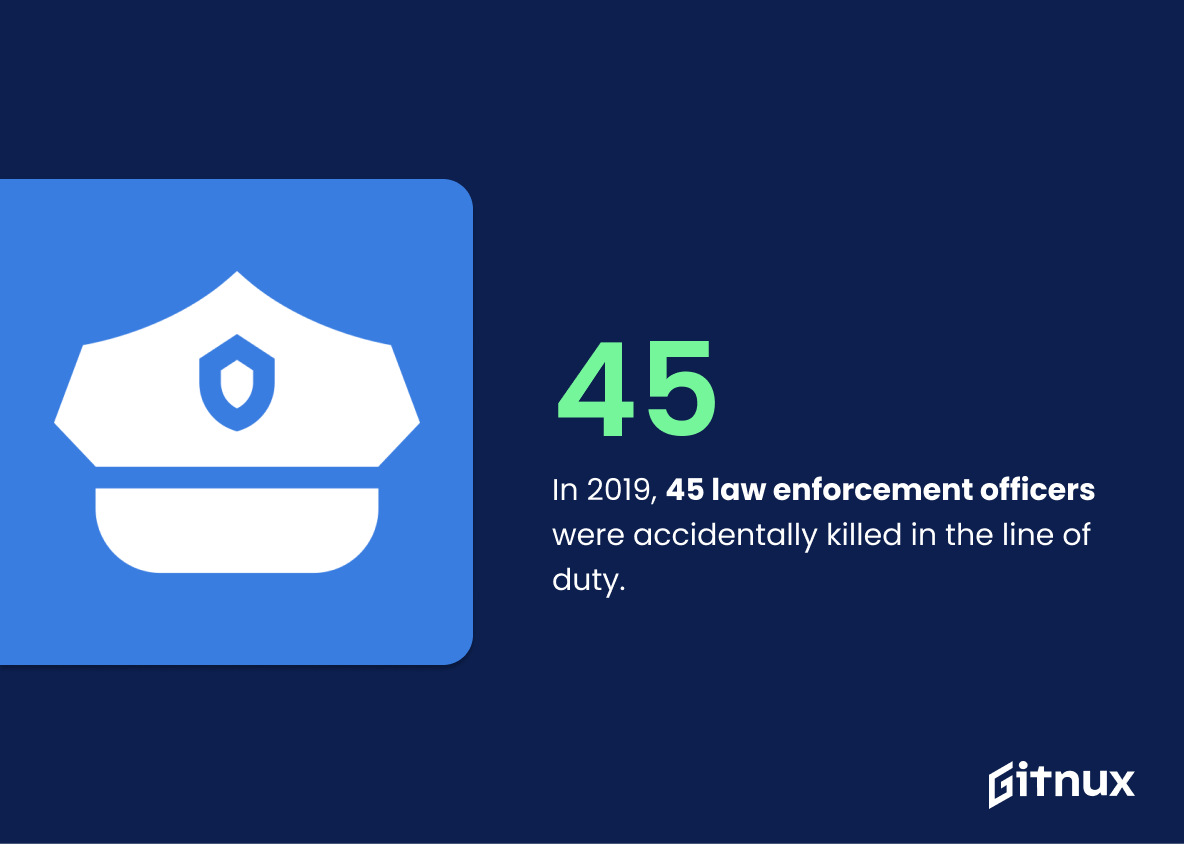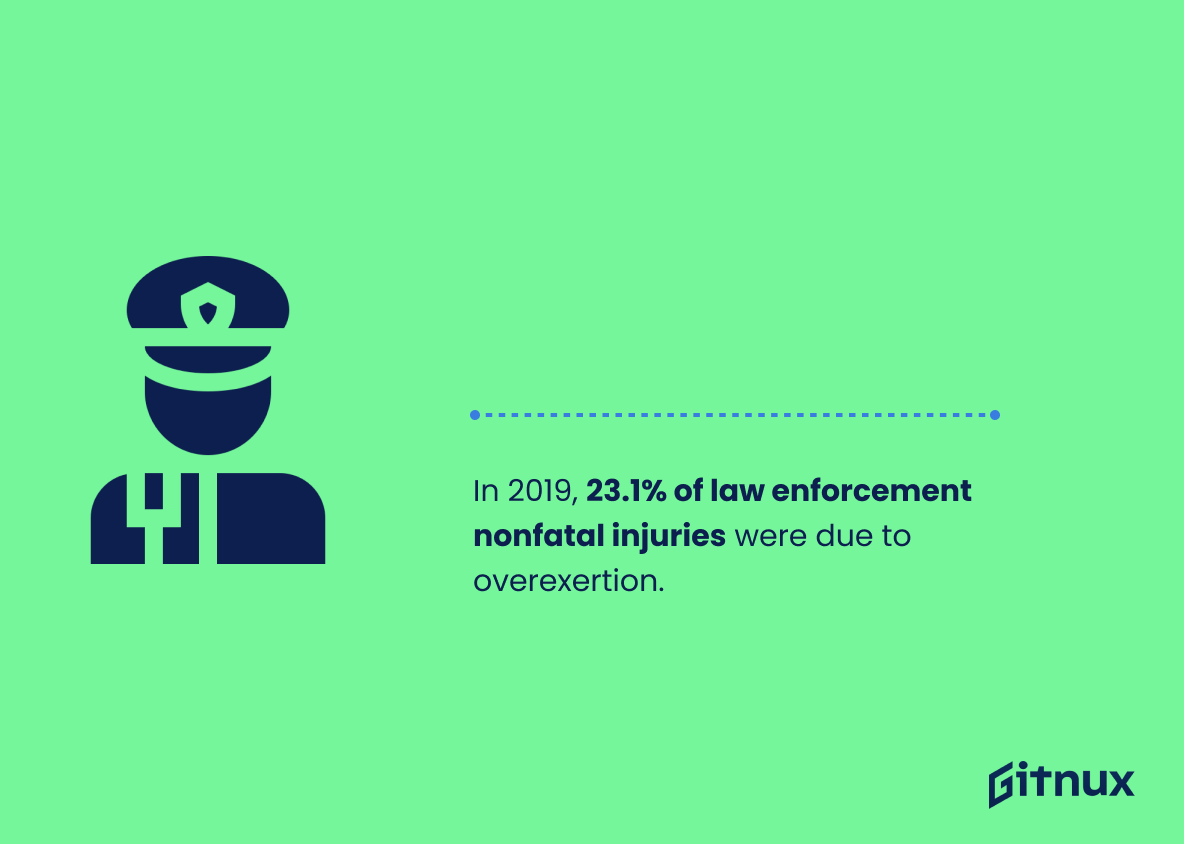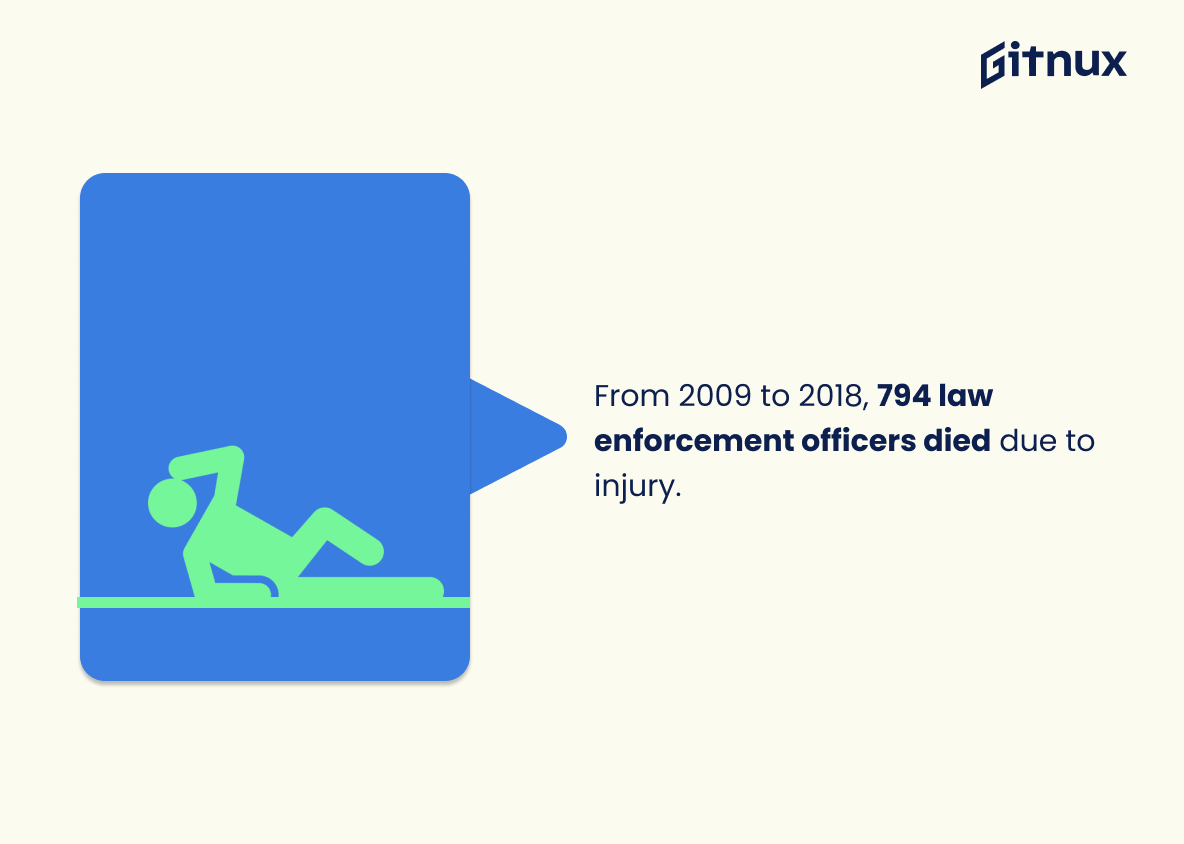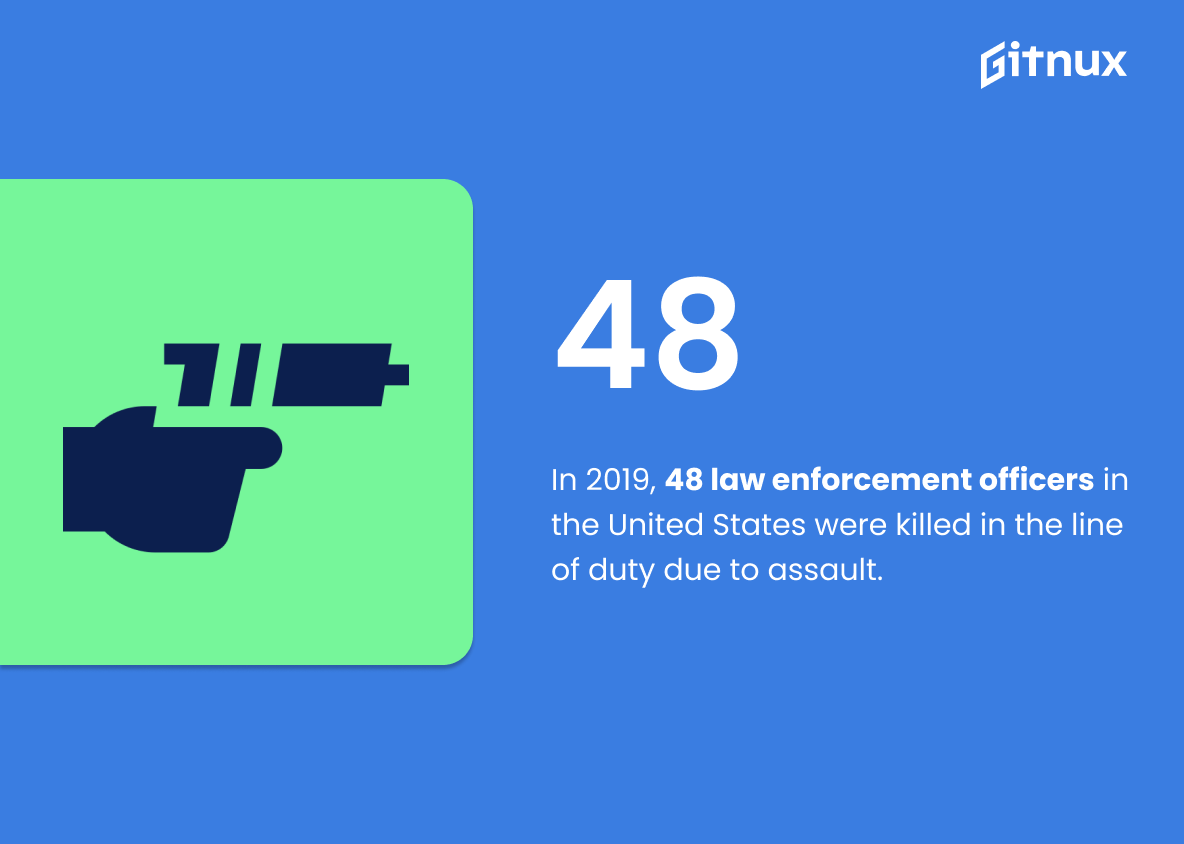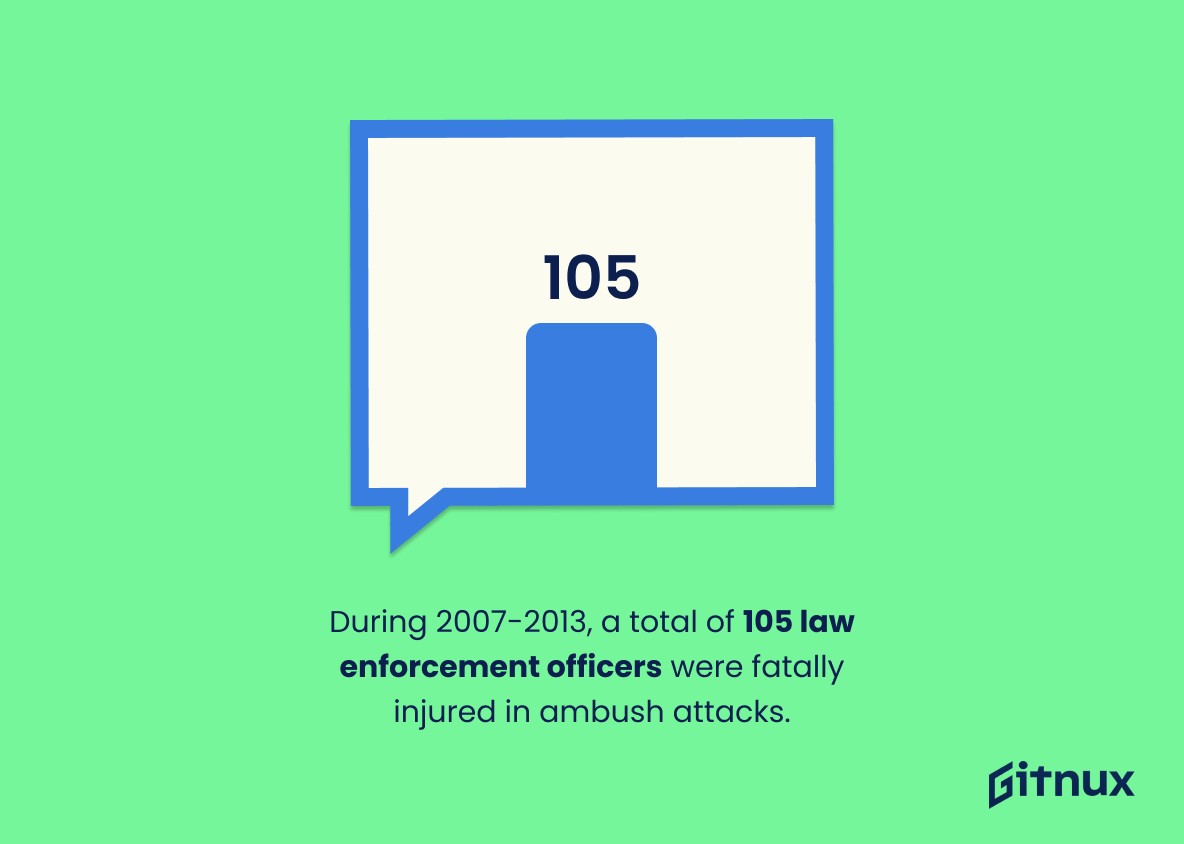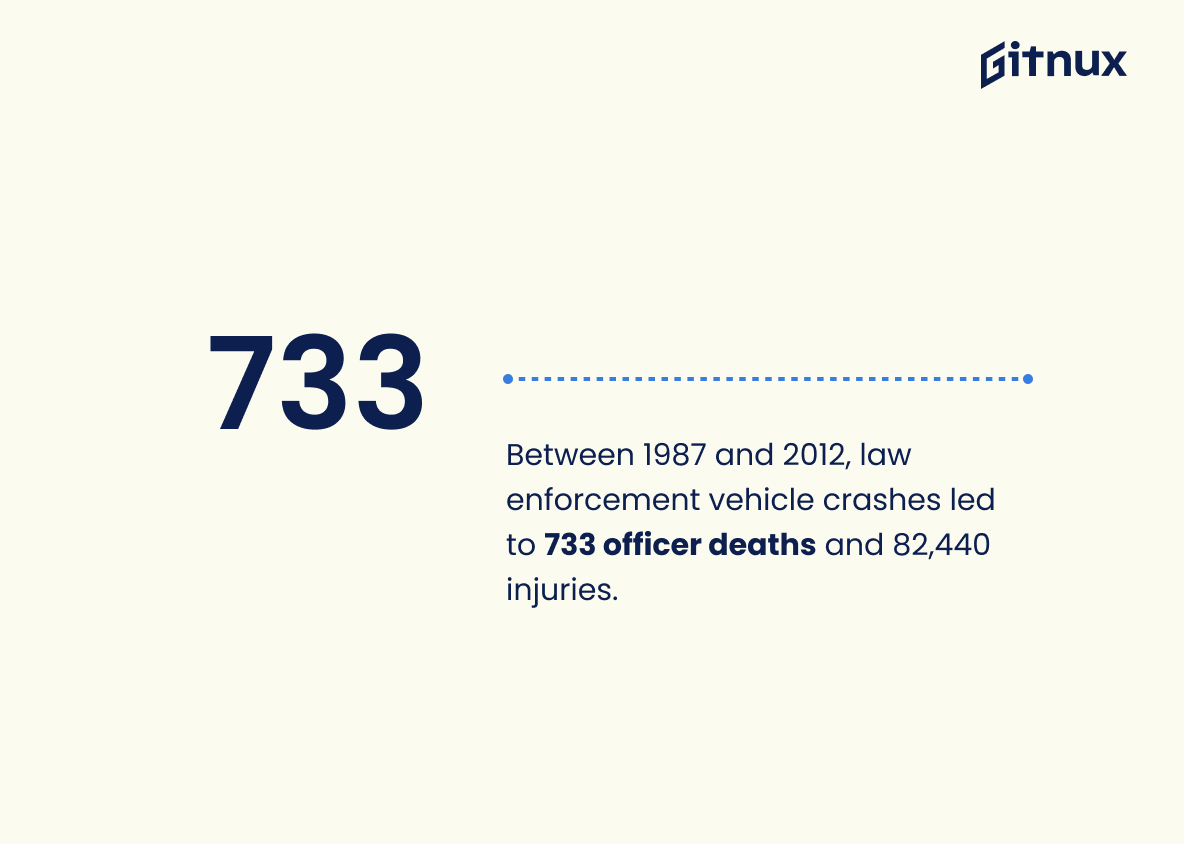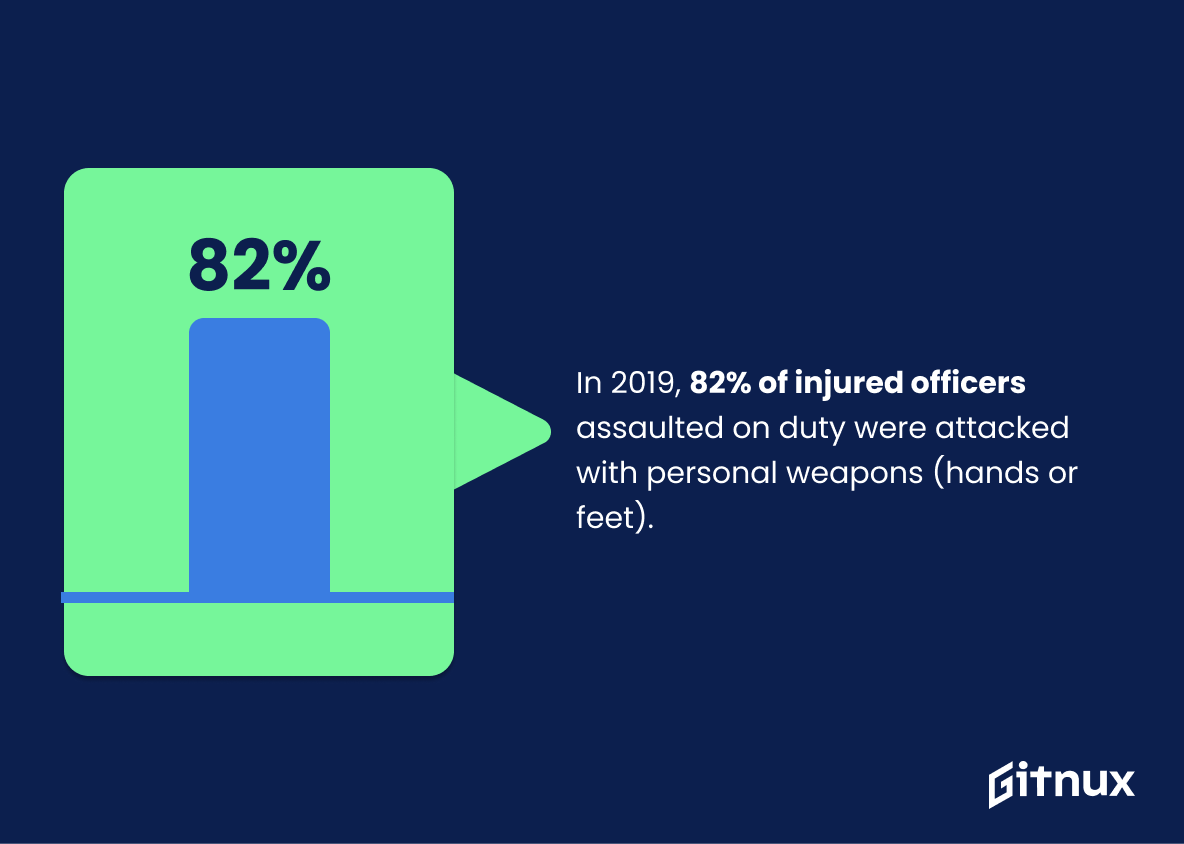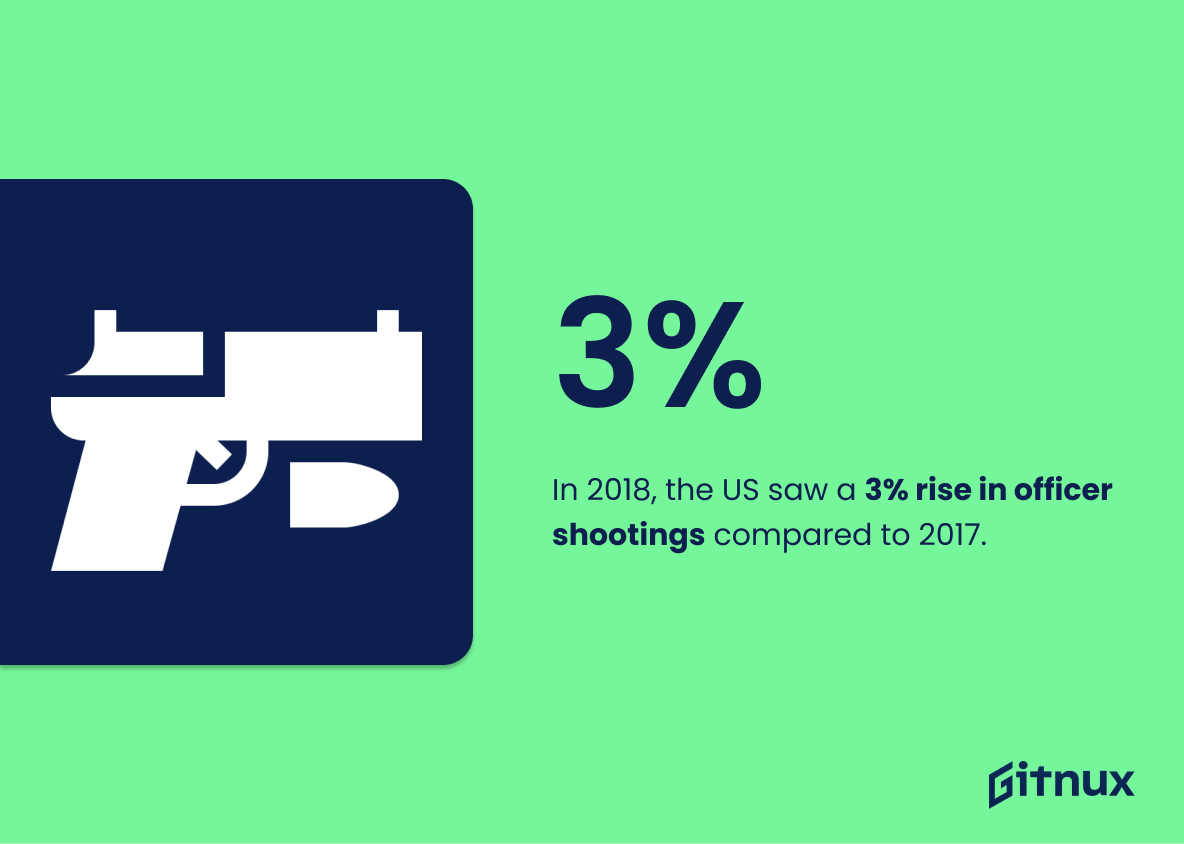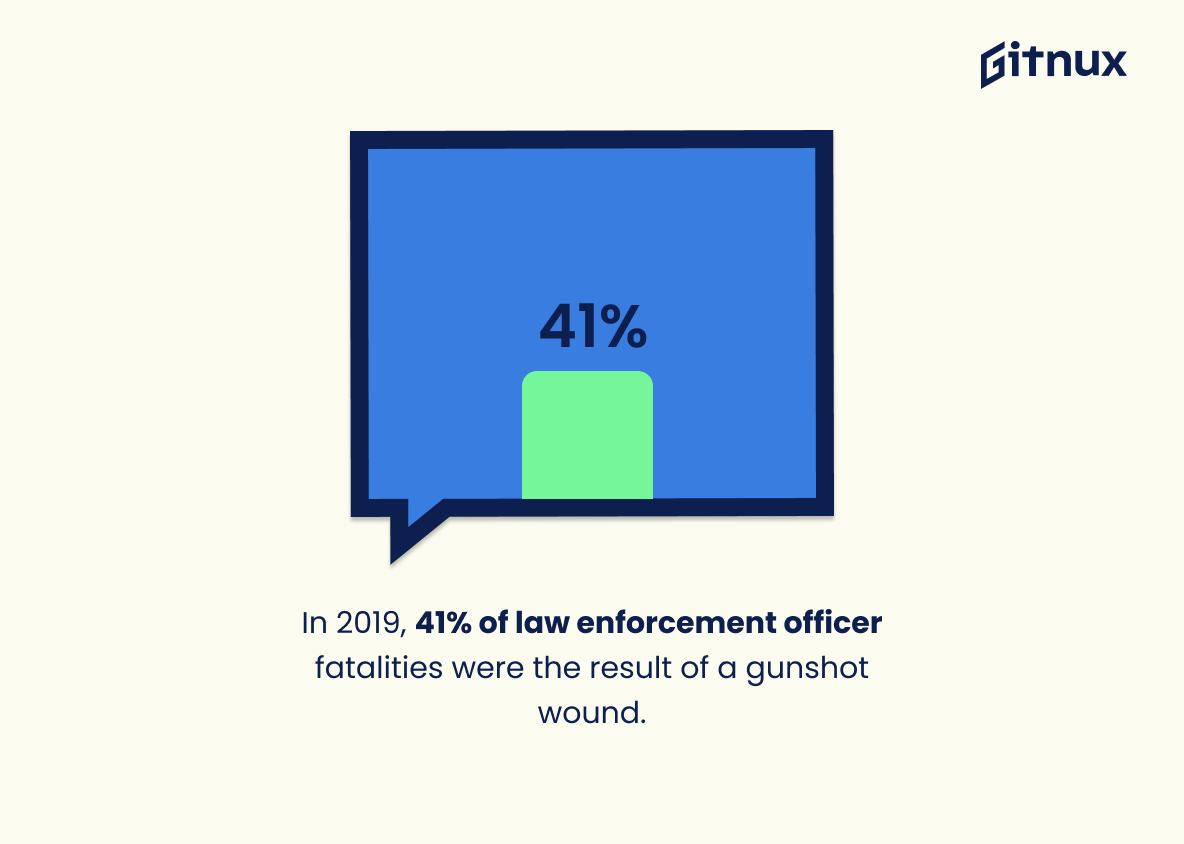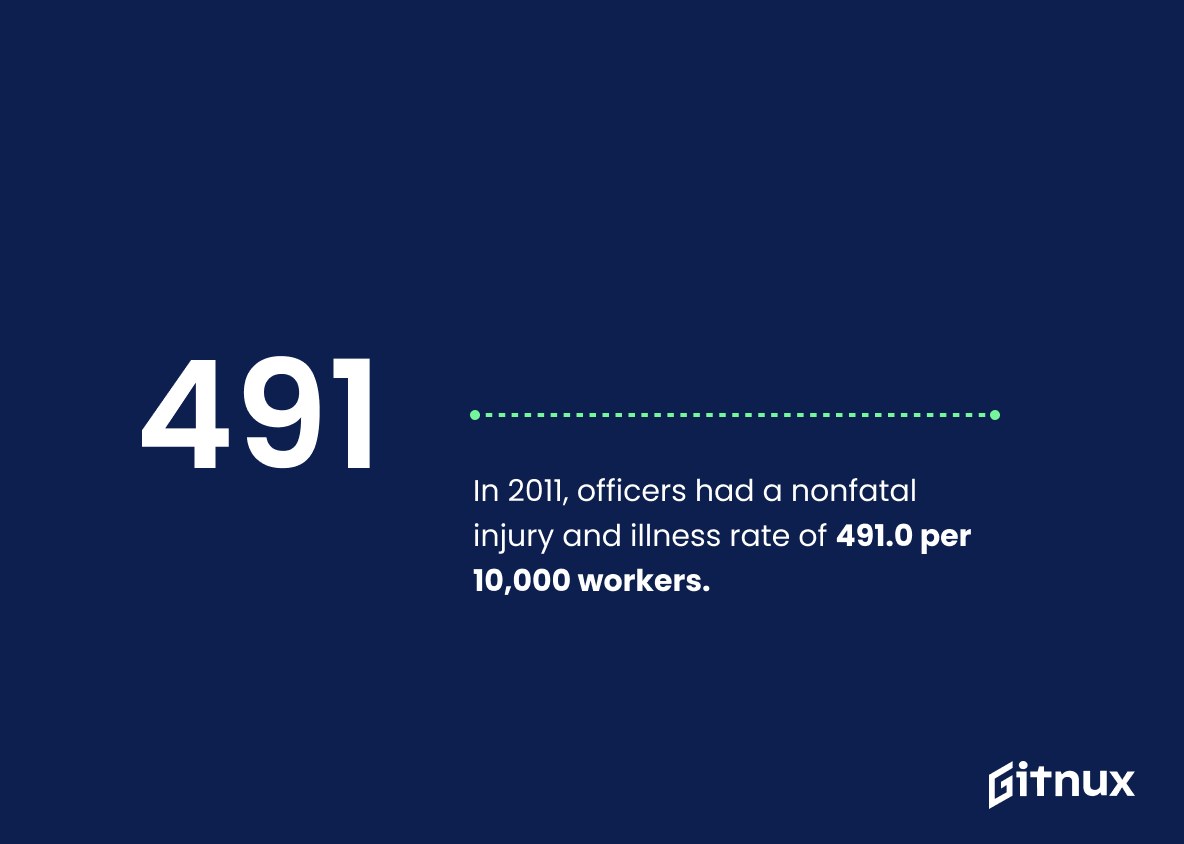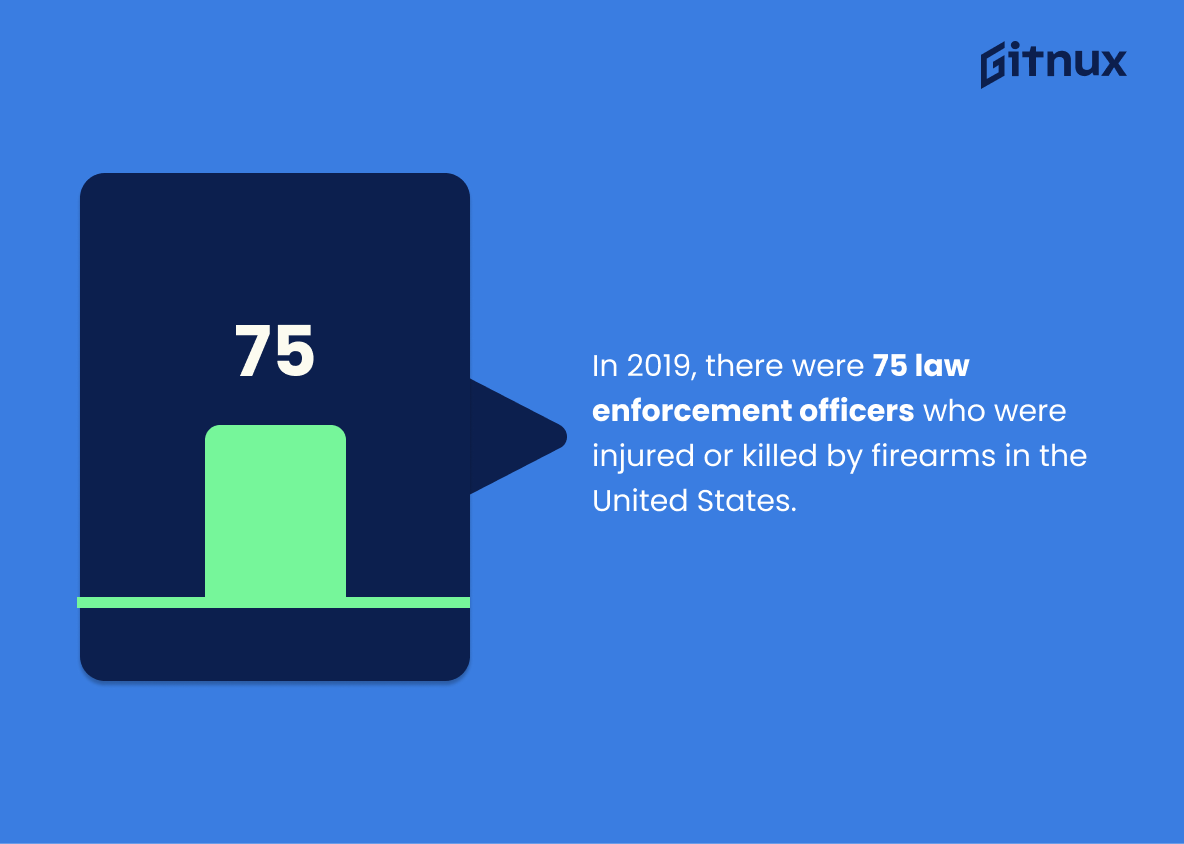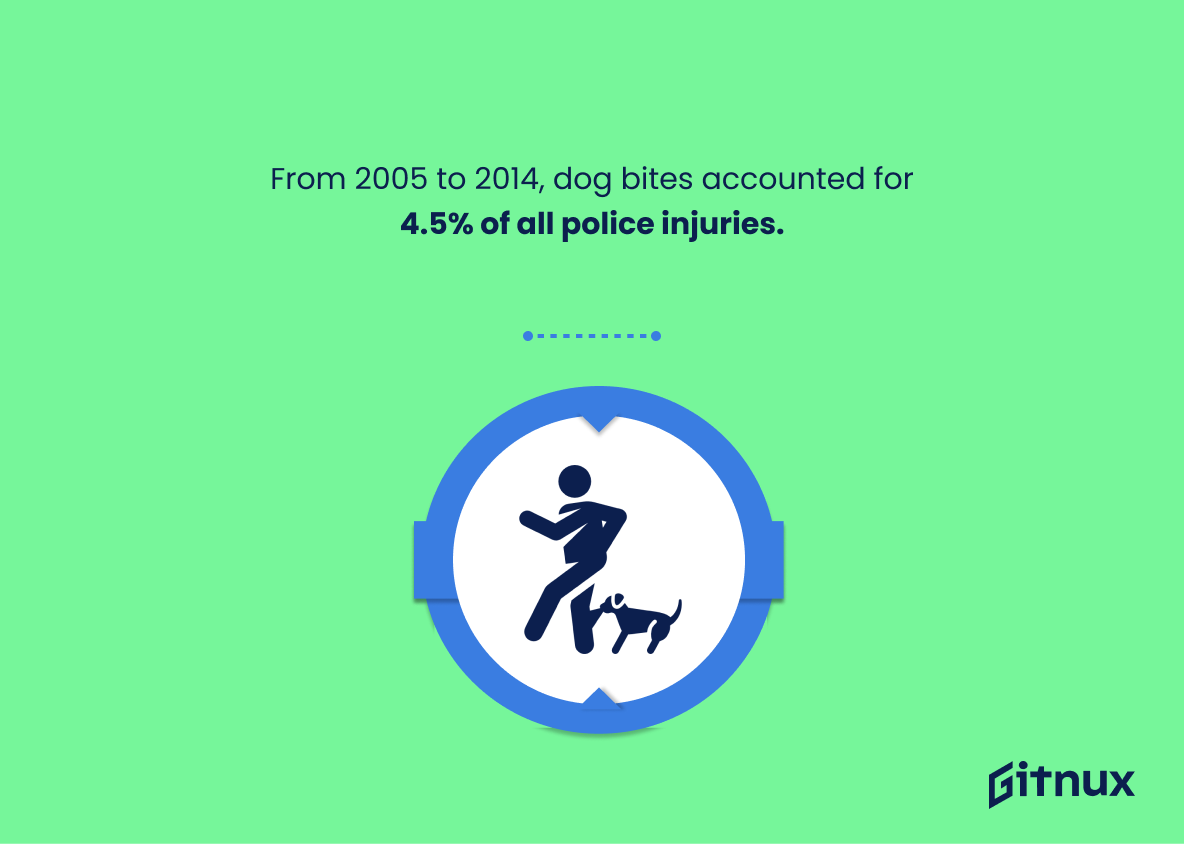Law enforcement officers put their lives on the line every day to protect and serve our communities. Unfortunately, this often comes at a cost – in 2019 alone, there were an estimated 58,866 nonfatal injuries among law enforcement officers in the United States. Between 2010 and 2019, 541 law enforcement officers were feloniously killed in the line of duty while 45 died accidentally. From 2003-2014, 30,990 occupational injuries and illnesses among police and sheriff’s patrol officers resulted in missed workdays according to Bureau of Labor Statistics data.
In addition to these statistics related to injury or death due to violence or accidents involving motor vehicles or firearms; overexertion/bodily reaction (23%), dog bites (4.5%) as well as domestic disturbances (14 fatalities) are also causes for concern when it comes to officer safety over time periods ranging from 1996-2010 through 2009-2018 up until present day 2019 figures which show that 41% of all fatalities occurred due traffic incidents with 82% being attacked by personal weapons such as hands/feet etc..
This blog post will explore further details regarding Police Injury Statistics including those mentioned above so we can gain a better understanding about how best we can ensure greater protection for our brave men & women who risk their lives daily protecting us all.
This statistic is a stark reminder of the risks that law enforcement officers face on a daily basis. It highlights the need for better safety measures and training to protect officers from harm. It also serves as a reminder of the importance of recognizing and supporting the work of law enforcement officers, who put their lives on the line to protect our communities.
Between 2010 and 2019, the number of law enforcement officers feloniously killed in the line of duty was 541.
This statistic is a stark reminder of the dangers that law enforcement officers face on a daily basis. It highlights the ultimate sacrifice that 541 officers have made in the line of duty over the past decade, and serves as a reminder of the risks that police officers take to protect their communities. It is a sobering reminder of the risks that police officers take to keep us safe, and the importance of recognizing and honoring their service.
Police Injury Statistics Overview
In 2019, 45 law enforcement officers were accidentally killed in the line of duty.
This statistic is a stark reminder of the dangers that law enforcement officers face on a daily basis. It serves as a reminder of the ultimate sacrifice that these brave men and women make in order to protect and serve their communities. It is a sobering reminder of the risks that police officers take in order to keep us safe, and it should not be taken lightly.
From 2003-2014, the Bureau of Labor Statistics reported 30,990 occupational injuries and illnesses among police and sheriff’s patrol officers that resulted in missed workdays.
This statistic is a stark reminder of the risks that police and sheriff’s patrol officers face on a daily basis. It highlights the fact that these brave individuals are exposed to a variety of hazards that can lead to serious injury or illness, and that these injuries and illnesses can have a significant impact on their ability to work. This statistic serves as a reminder of the importance of providing police officers with the necessary safety equipment and training to help protect them from harm.
In 2019, 23.1% of the nonfatal injuries among law enforcement officers resulted from overexertion or bodily reaction.
This statistic is a stark reminder of the physical toll that law enforcement officers face on a daily basis. It highlights the fact that the job of a police officer is not only mentally and emotionally taxing, but also physically demanding. Overexertion and bodily reaction injuries are a testament to the physical strain that officers endure in order to protect and serve their communities.
Between 2009 and 2018, there were 794 recorded deaths of law enforcement officers due to injury.
This statistic is a stark reminder of the dangers that law enforcement officers face on a daily basis. It highlights the need for improved safety measures and better protection for those who put their lives on the line to protect our communities. It also serves as a reminder of the sacrifices that these brave men and women make in order to keep us safe.
Between 1996-2010, approximately 1605 law enforcement officers were injured or killed when responding to motor vehicle crashes.
This statistic serves as a stark reminder of the dangers that law enforcement officers face when responding to motor vehicle crashes. It highlights the need for increased safety measures to protect these brave individuals who put their lives on the line to protect the public. It also serves as a reminder of the importance of obeying traffic laws and driving safely to help reduce the number of crashes and the potential for injury or death.
In 2019, 48 law enforcement officers in the United States were killed in the line of duty due to assault.
This statistic is a stark reminder of the dangers that law enforcement officers face on a daily basis. It highlights the risks that these brave individuals take to protect and serve their communities, and the ultimate sacrifice that some of them have made. It is a sobering reminder of the importance of understanding police injury statistics, and the need to ensure that law enforcement officers are provided with the necessary resources and support to keep them safe.
During 2007-2013, a total of 105 law enforcement officers were fatally injured in ambush attacks.
This statistic is a stark reminder of the dangers that law enforcement officers face on a daily basis. It highlights the fact that ambush attacks are a real and present threat to the safety of police officers, and that more needs to be done to protect them from such attacks. It also serves as a reminder of the ultimate sacrifice that some officers have made in the line of duty.
Between 1987 and 2012, law enforcement motor vehicle crashes resulted in 733 officer work-related fatalities and 82,440 injuries.
This statistic is a stark reminder of the dangers that law enforcement officers face on a daily basis. It highlights the fact that, despite the best efforts of police departments to ensure the safety of their officers, there are still a significant number of motor vehicle crashes that result in fatalities and injuries. This statistic serves as a reminder that police officers put their lives on the line every day to protect and serve their communities, and that their safety should be a priority for all of us.
In 2019, 82% of officers who were assaulted in the line of duty and sustained injuries were attacked with personal weapons like hands or feet.
This statistic is a stark reminder of the dangers that police officers face on a daily basis. It highlights the fact that the majority of assaults on officers are not committed with weapons, but with the assailant’s own body. This emphasizes the need for officers to be constantly vigilant and prepared for any situation, as even unarmed assailants can cause serious injury. It also serves as a reminder of the importance of proper training and safety protocols for officers, as well as the need for adequate protection and support for those who serve in law enforcement.
From 2005-2014, approximately 9.5% of police injuries resulted from being struck by a motor vehicle.
This statistic is a telling indication of the dangers that police officers face on the job. It highlights the fact that motor vehicles can be a major source of injury for police officers, and that steps should be taken to ensure their safety when they are on the road. This statistic is an important reminder that police officers are at risk of being injured by motor vehicles, and that their safety should be taken seriously.
In 2018, there was a 3% increase in the number of officers who were shot and killed in the United States, compared to 2017.
This statistic is a stark reminder of the dangers that police officers face on a daily basis. It highlights the need for increased safety measures and better protection for those who put their lives on the line to protect our communities. It also serves as a reminder of the importance of recognizing and honoring the sacrifices that police officers make in order to keep us safe.
In 2019, 41% of law enforcement officer fatalities were the result of a gunshot wound.
This statistic is a stark reminder of the dangers that law enforcement officers face on a daily basis. It highlights the fact that gun violence is a major threat to the safety of police officers, and that steps must be taken to ensure their protection. This statistic is a call to action for law enforcement agencies to take measures to reduce the risk of gun violence and to provide officers with the necessary training and equipment to protect themselves.
The estimated rate of nonfatal occupational injuries and illnesses for officers was 491.0 per 10,000 full-time workers in 2011.
This statistic is a stark reminder of the risks that police officers face on a daily basis. It highlights the fact that, despite the best efforts of law enforcement, the job of a police officer is still a dangerous one. It also serves as a reminder that police officers need to be provided with the best possible safety equipment and training to ensure that they can do their job safely and effectively.
In 2019, there were 75 law enforcement officers who were injured or killed by firearms in the United States.
This statistic is a stark reminder of the dangers that law enforcement officers face on a daily basis. It highlights the need for increased safety measures and better protection for those who put their lives on the line to protect our communities. It also serves as a reminder of the importance of understanding the risks associated with police work and the need for proper training and equipment to ensure the safety of officers.
From 2005 to 2014, dog bites accounted for 4.5% of all police injuries.
This statistic is a telling indication of the dangers that police officers face on the job. It highlights the fact that even seemingly harmless animals can pose a threat to the safety of law enforcement personnel. This is an important reminder that police officers must remain vigilant and take all necessary precautions when dealing with animals.
From 2004-2014, 350 U.S. law enforcement officers were struck and killed by vehicles while outside their patrol cars.
This statistic is a stark reminder of the dangers that law enforcement officers face on a daily basis. It highlights the fact that even when officers are outside of their patrol cars, they are still vulnerable to being struck and killed by vehicles. This statistic serves as a reminder of the risks that police officers take to protect and serve their communities, and the importance of taking steps to ensure their safety.
In 2019, 42% of law enforcement officer fatalities in the United States occurred due to traffic-related incidents.
This statistic is a stark reminder of the dangers that law enforcement officers face on a daily basis. It highlights the fact that traffic-related incidents are a major cause of fatalities among law enforcement officers, and that steps must be taken to ensure their safety while on the job. This statistic is an important part of understanding the overall picture of police injury statistics, and should not be overlooked.
In 2019, 14 law enforcement officers sustained fatal injuries when responding to or conducting investigations related to domestic disturbances.
This statistic is a stark reminder of the dangers that law enforcement officers face when responding to or conducting investigations related to domestic disturbances. It highlights the need for increased safety measures and training to ensure that officers are adequately prepared to handle these potentially volatile situations. It also serves as a reminder of the risks that officers take every day to protect and serve their communities.
Conclusion
The statistics presented in this blog post demonstrate the dangers that law enforcement officers face on a daily basis. In 2019 alone, there were an estimated 58,866 nonfatal injuries among law enforcement officers and 75 who were injured or killed by firearms. Additionally, 541 officers were feloniously killed between 2010 and 2019 while 45 died accidentally in the line of duty during that same period. Furthermore, from 2003-2014 30,990 occupational injuries and illnesses occurred among police patrol officers resulting in missed workdays.
These numbers are staggering but they do not tell the full story of what it means to be a law enforcement officer today; these brave men and women put their lives at risk every day for our safety without hesitation or complaint. We owe them our gratitude for their service as well as our support when tragedy strikes one of their own due to injury or death while protecting us all from harm’s way.
References
0. – https://www.ncbi.nlm.nih.gov
1. – https://www.odmp.org
2. – https://www.apa.org
3. – https://www.bls.gov
4. – https://www.ucr.fbi.gov
5. – https://www.cdc.gov
6. – https://www.bjs.gov
